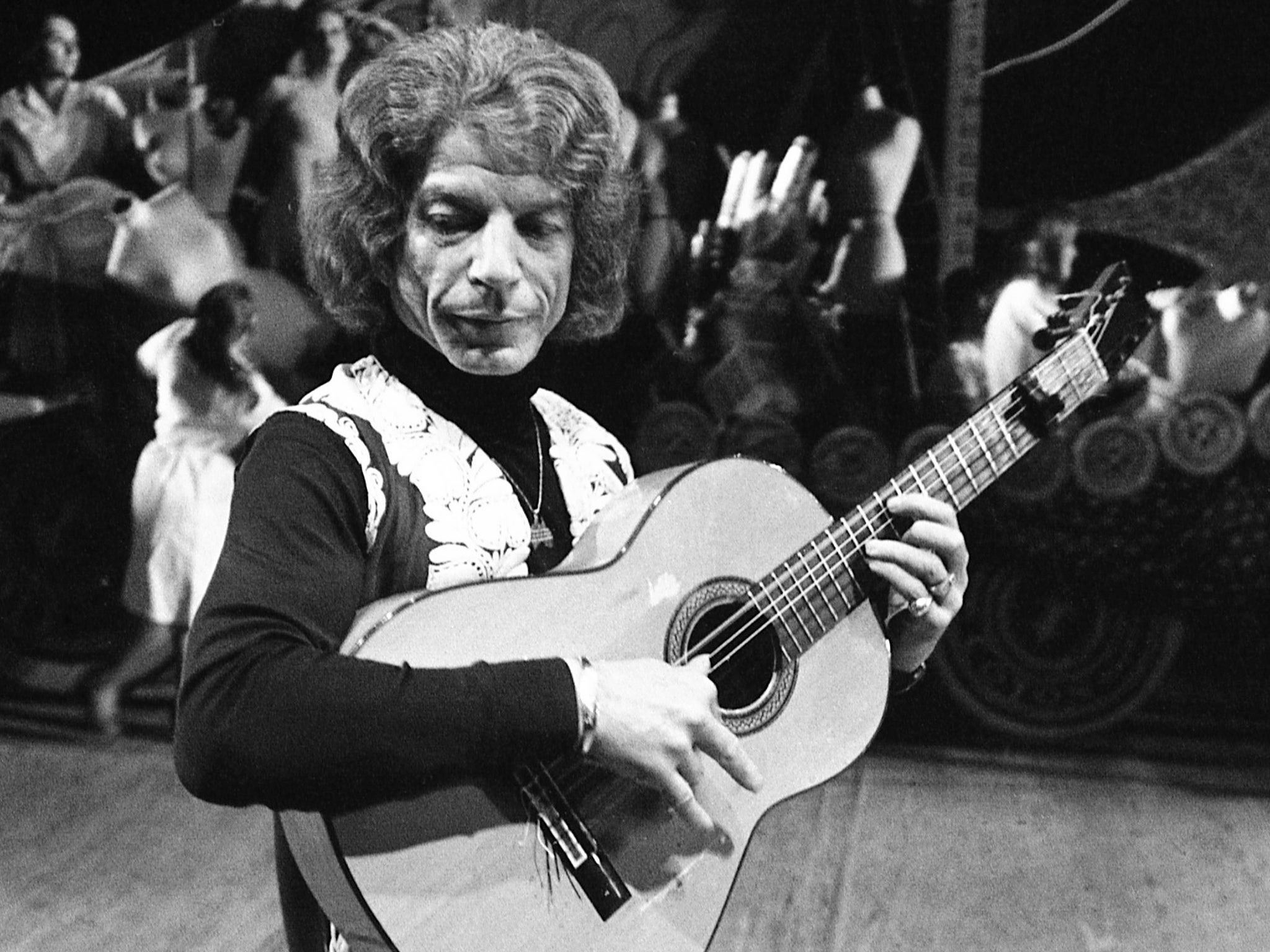Manitas de Plata: Flamenco guitarist known as 'the rage of the Riviera' whose devoted following included Bardot and Dali

Your support helps us to tell the story
From reproductive rights to climate change to Big Tech, The Independent is on the ground when the story is developing. Whether it's investigating the financials of Elon Musk's pro-Trump PAC or producing our latest documentary, 'The A Word', which shines a light on the American women fighting for reproductive rights, we know how important it is to parse out the facts from the messaging.
At such a critical moment in US history, we need reporters on the ground. Your donation allows us to keep sending journalists to speak to both sides of the story.
The Independent is trusted by Americans across the entire political spectrum. And unlike many other quality news outlets, we choose not to lock Americans out of our reporting and analysis with paywalls. We believe quality journalism should be available to everyone, paid for by those who can afford it.
Your support makes all the difference.Manitas de Plata was one of the world’s most renowned flamenco guitarists, who sold almost 100 million records and whose charismatic stage presence helped him acquire a devoted following that included Charlie Chaplin and Brigitte Bardot.
De Plata, whose real name was Ricardo Baliardo, was part of an acclaimed musical family in the Roma tradition of southern France and Spain.
For many years, he did not perform before audiences outside his native culture. When he finally stepped into the spotlight, he adopted the stage name of Manitas de Plata: Little Hands of Silver. In the early 1960s he became known as the “rage of the Riviera”, where his high-profile admirers included Brigitte Bardot, Jean Cocteau and Pablo Picasso – who once drew figures of matadors and a bull on de Plata’s guitar and declared, “That man is of greater worth than I am!”
In 1967 de Plata performed onstage while Salvador Dali simultaneously made a painting beside him, inspired by the music. Around the same time, the guitarist was captured onscreen delighting a young Bardot. “Manitas carried with him all the joie de vivre and carefree attitude of my youth,” she said in a statement.
Early in his career, de Plata resisted efforts to make records, fearing that he might be swindled. He did not release the first of more than 80 albums until 1963 but became recognised at once for his lightning-fast style, playing intricate flamenco tunes in a distinctive, original manner that sometimes flouted established musical conventions.
His first American concert was at the Carnegie Hall in New York in 1965. “The guitarist’s tone is large and warm, his projection strong, his technique prodigious and his fluency and authority with the multi-hued flamenco idiom is readily apparent,” the music critic Robert Shelton wrote in the New York Times.
As Picasso perhaps understood, there was something of the matador about de Plata. He was trim, with a handsome, chiselled face and a full head of hair. He propped his right foot on a chair and, without a word, began to play his battered, Spanish Ramirez guitar. Except for his hands, he stood completely still. He punctuated his rapid arpeggios with drum-like thumps on the body of his guitar. At times, he dramatically lifted his right hand in the air while playing a melody entirely with his left hand.
On occasion, de Plata would put down his guitar and begin to dance, executing the heel-tapping, hand-clapping flamenco movements with graceful precision. At the end of a performance, he held his guitar in front of him, as if to give the instrument a round of applause.
Ricardo Baliardo was born in 1921 in a gypsy caravan in the southern French community of Sète. Encouraged by an uncle, he began to play guitar as a child and was considered a virtuoso by the time he was nine. “Le professeur,” he said in 1975, “c’etait moi.” [“The teacher was me.”]
He never learned to read or write and, for years, played only in Roma gatherings in France and Spain. As a child he was inspired by the French gypsy guitarist Django Reinhardt. Although he seldom played the jazz tunes favoured by Reinhardt, de Plata sometimes improvised around the standard rhythmic structure of flamenco, upsetting many traditionalists.
De Plata was primarily a solo artist, but he often performed with members of his family. Several of his sons and nephews formed the Gipsy Kings, an acclaimed flamenco crossover band, in the 1980s. Tonino Baliardo, one of his sons, is the group’s lead guitarist.
At the height of his fame in the 1970s, de Plata presented more than 150 concerts a year. He owned a Maserati, Lamborghini, Rolls-Royce and Mercedes-Benz, and his admirers included Marlon Brando, Elizabeth Taylor and Charlie Chaplin. He once supported as many as 80 members of his extended family, but as he noted in 2011, “I have always lived day to day.” His nephew Ricao Bissiere said his uncle was almost penniless when he died, having spent his fortune on “roulette, fancy cars, going out and beautiful women.”
De Plata, who performed into his eighties, said the two things that mattered most in his life were music and women. He was believed to have fathered at least 20 children. Asked in 1975 whether he was married, he replied, “Yes, every night.” Did he have any children? “Mais oui,” he laughed. “In France. In Spain. Everywhere.”
Ricardo Baliardo (Manitas de Plata), guitarist: born Sète, France 7 August 1921; c. 20 children; died Montpellier 5 November 2014.
© The Washington Post
Join our commenting forum
Join thought-provoking conversations, follow other Independent readers and see their replies
Comments